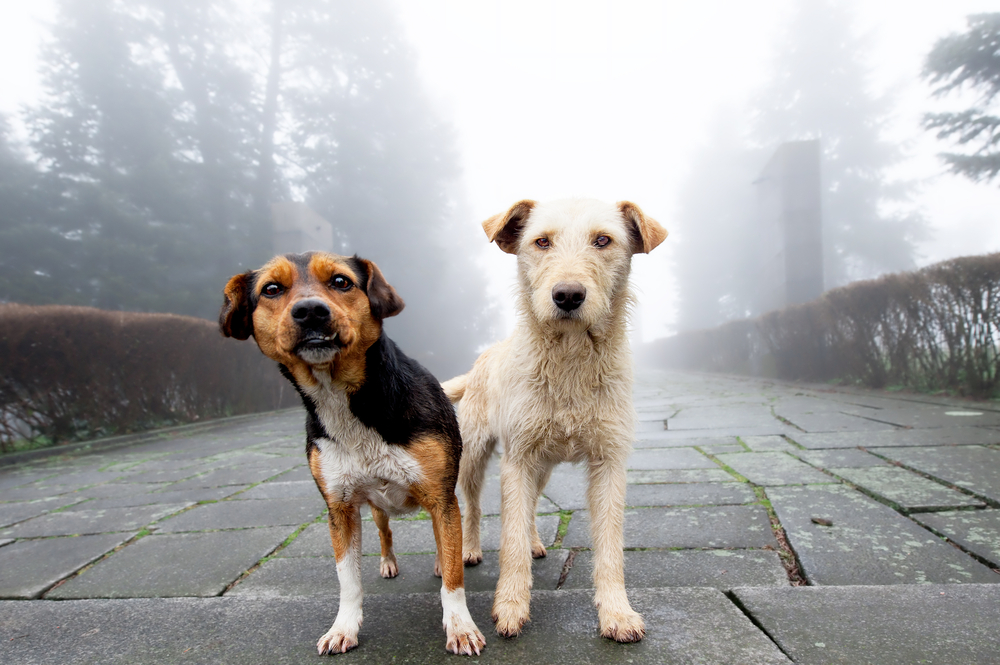Picture this: you live in the countryside in a picturesque cottage surrounded by acres and acres of woodland. It’s quiet, apart from the gentle rustle of leaves and distant mooing of cows. It’s 9pm and you’re just settling down for the evening, the dogs on que, are scratching at the door to be let out one last time before bedtime. You open the door and let them out, then sit back down in front of the fire. The T. V’s on and you’re watching QI; Sandi Toksvig mentions something about thousands of dogs going missing every year – it prompts you glance at your clock and you realise the dogs haven’t pawed at the door to be let back in yet. It’s been more than their usual 10 minutes.
You poke your head out the door and call their names only to be greeted by deathly silence. You shout again, this time a little louder. Nothing. The panic starts to settle in as you grab a torch from the utility room; it’s pitch black outside and minus 2. Trying not to panic you briskly walk to find your coat and run out the door. It’s only as you start heading towards the tree’s that you realise you don’t know which direction your two dogs went in and you suddenly find your hands on your head, stomach full of worry and a head full of despair.
Then you remember, you put the Pawfit device on them. You fumble in your pocket and grab out your phone, quickly tapping for the app. You can see which direction they went in and follow the GPS. They are moving quickly across the fields, but you can see where they are and which way they’re heading. A few minutes later, they split. You head for the closest dog, calling your wife on the way to grab the car. In the distance you see a filthy, wet and shaky dog running towards you. He’s cold, really cold. But he’s safe now. Your wife turns up and you bundle him into the car and set out to get the other one.
You recall there being an alarm and light feature on their Pawfit devices. As soon as you get closer to the area where your dog is, you set the alarm and turn the light on. Then you see it, the shining light of the device. You realise your dog is stuck in a ditch between a farm and a fence. He’s agitated, cold, wet and afraid. You note that you’ve never seen your dog look more relieved to see you. He is up to his waist in mud and can’t get out of the ditch. You get in and lift him out, holding him tight as you do so. It’s just occurred to you that had you not found him, he wouldn’t have lasted the night. Neither of them would.

Each year in the UK, thousands of dogs go missing from their warm, safe homes and their loving owners. Some, like the two dogs in our true story, might get spooked in their own gardens and runoff, others, might be on a walk and pick up a smell quicker than you can grab their lead. It can be devastating for the owner, as your dog is instantly at a higher risk of getting injured or worse.
Up until very recently, the only thing owners could really do was keep an eye on their pets as much as possible- which all pet owners will tell you – is easier said than done. However, things have changed, and technology has come up with a solution to help give owners peace of mind. GPS trackers for dogs (and cats). It’s one of the easiest and most effective ways to keep an eye on your pet at all times. The tracker in the device sends a live location back to the app on your phone, meaning you can follow exactly where they’re going.
Just like in the story, if your dog runs off, the Pawfit device allows you to track it in real time. It’s also the only device that allows you to sound the alarm and turn on the light feature too, along with calorie counting, step monitoring and temperature detection. Having a Pawfit device is the best way to make sure that if your pet ever does go missing, that you’re reunited with them quickly.




How much does this device cost. I have had a tracking device on my dog, but it cost £39 a year to renew and it was impossible to do. So I have given up on that one. Also is it waterproof?